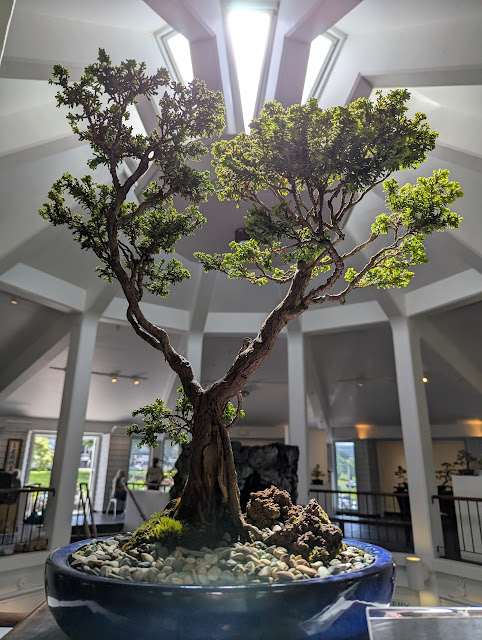There's a new building under construction on the UH Hilo campus (near to several places I have worked/am working), which when completed will house the USGS Hawaiian Volcano Observatory (HVO) and the USGS Pacific Island Ecosystems Research Center (PIERC). It's replacing a previous HVO building which was located in Hawaiian Volcanoes National Park and was damaged in Kīlauea's 2018 eruption; this new one will be closer to staff who live in Hilo and students from the UH campus. Preparation of the lot started last year but construction really picked up this spring, and since I drive by it most days I've been able to watch its progress. And as a construction site not really near lots of people, I felt comfortable bringing out my Avata for some FPV exploration.
Along with my Mini 3 Pro; the video below contains footage from both. This was recorded on the 4th of July weekend, though I had to go back and reshoot the FPV footage on a different day because I was still figuring out which lens profiles worked with Gyroflow for post-production stabilization. (Note to self: It's the Wide profile that works, not Normal or [as you might think] Extra Wide). It's a slight shame since the weather was absolutely beautiful the first day, but the FPV footage I got the second time was better overall so it all works out.
I'm pretty happy with the resulting video. I couldn't really figure out a way to make a single long FPV shot look good, but I like the cutting between wide establishing shots and the more interesting individual fly-throughs. The music actually does stop like that halfway through (though I extended the pause slightly), and when I saw that collision in my footage I thought it was too funny not to sync them up. The recovery makes me smile, as I had basically nothing to do with it – the Avata can sometimes autonomously recover from collisions when you'd hardly expect it to.
It turns out I got that footage at pretty much the optimal point in the construction process as just the next week they started filling in the walls, making the main building less see-through and (probably) harder to fly through. I hope I get a chance to visit when it's complete, as they're going to have some amazing views of Mauna Kea, Mauna Loa, and the Saddle between them from that north lanai. We'll see how it goes! I don't know how much longer construction will take, but I'd imagine it'll finish sometime next year. A hui hou!





















